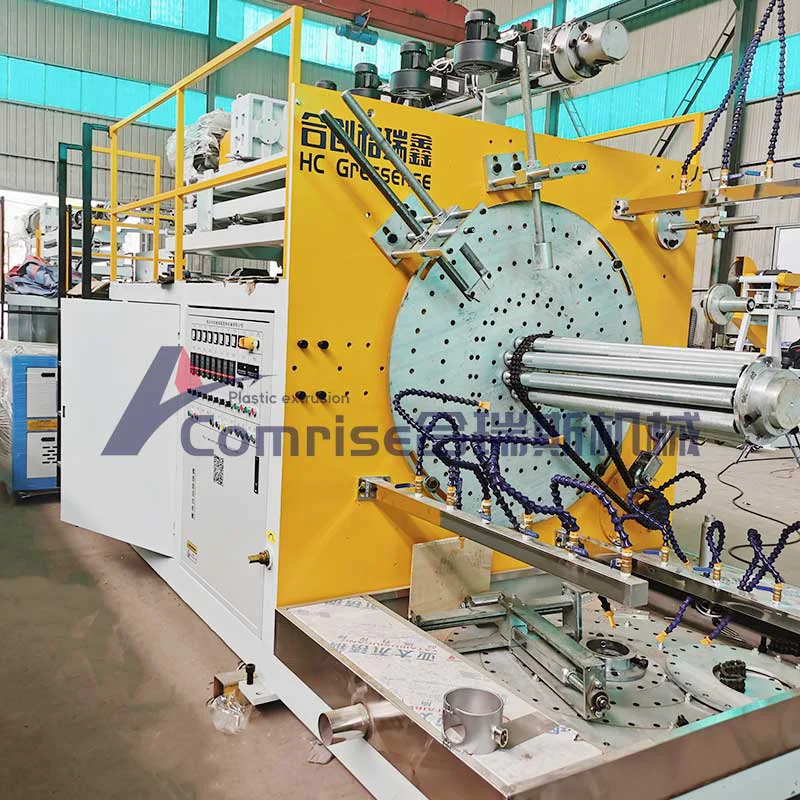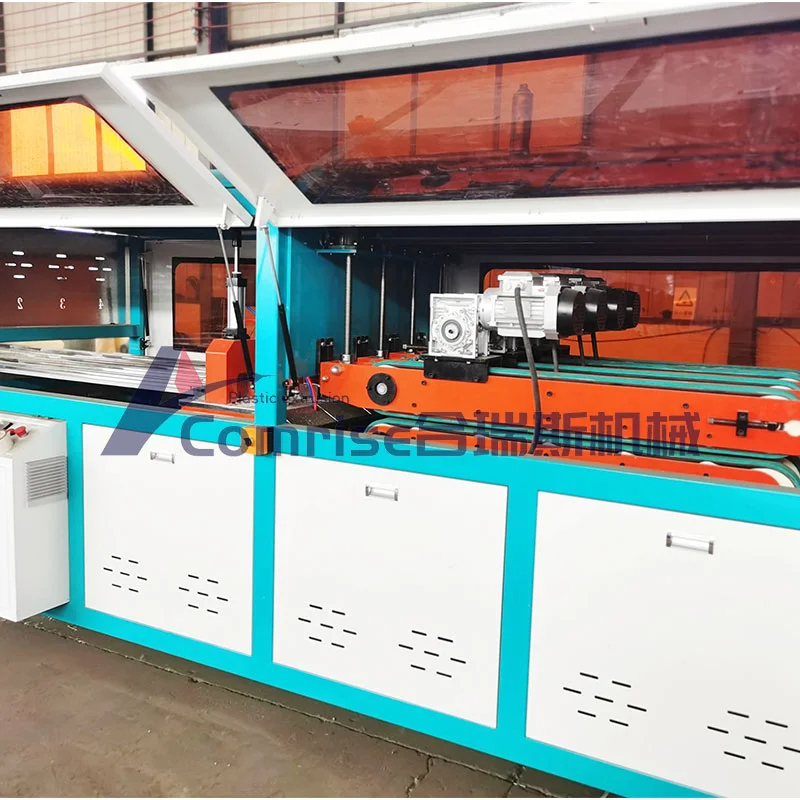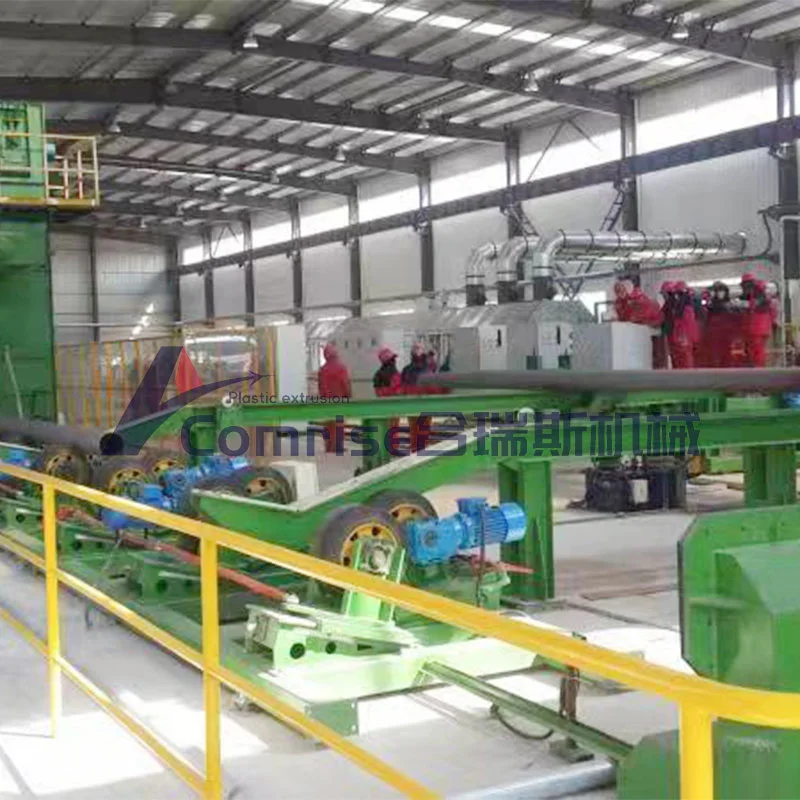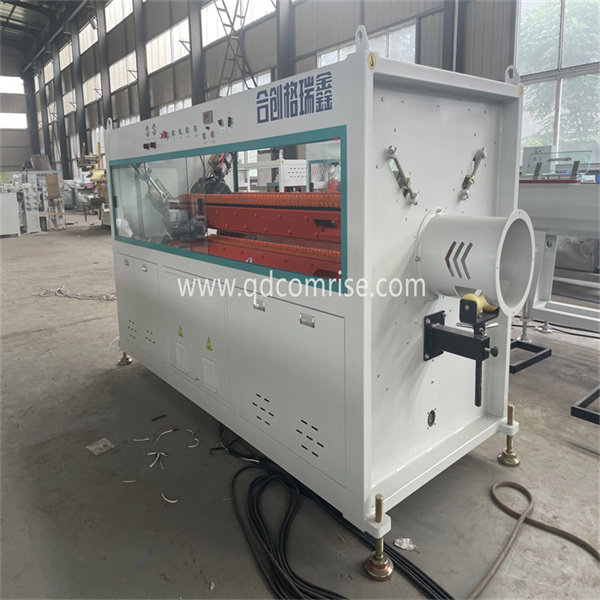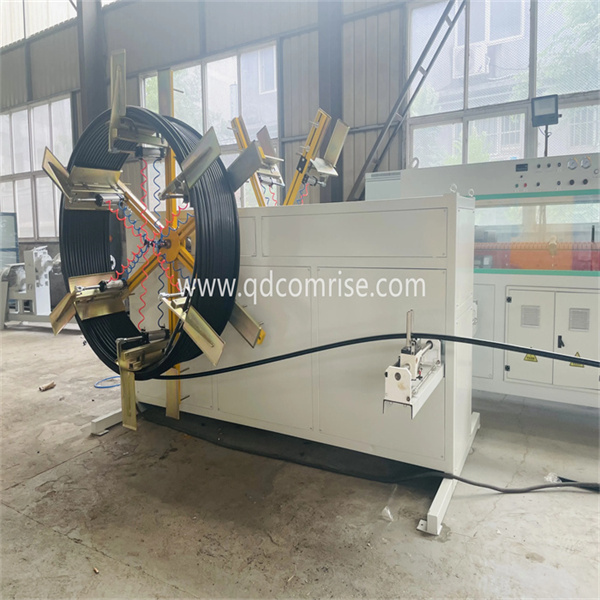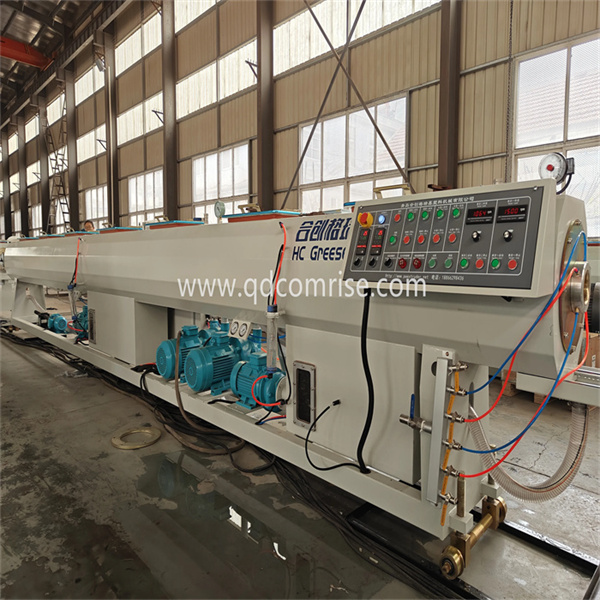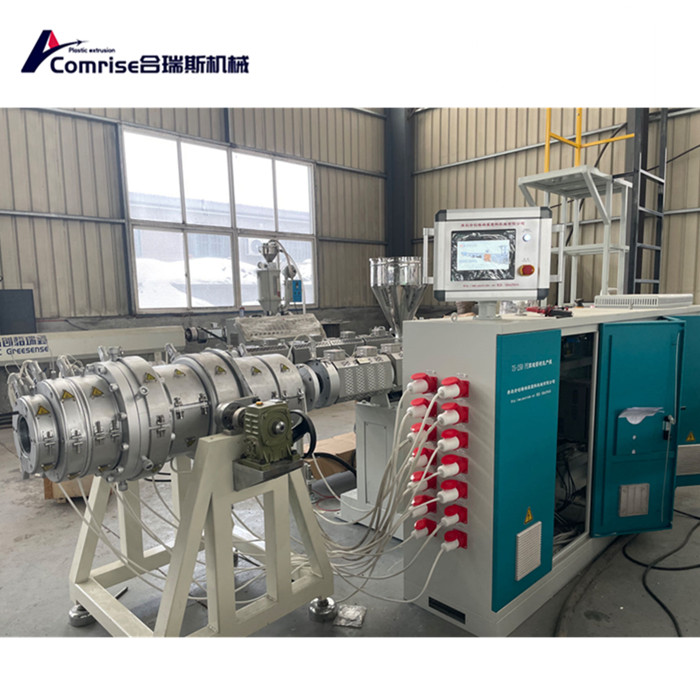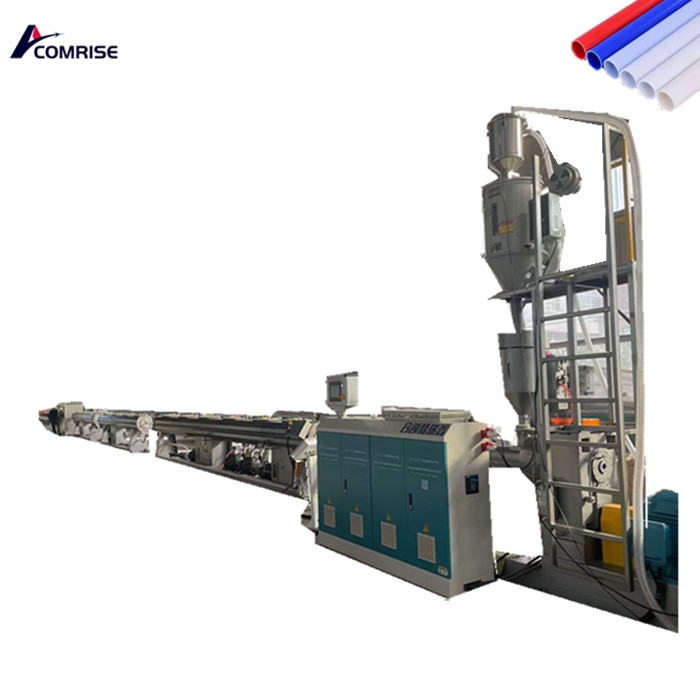Linka pro vytlačování potrubí PPR
Odeslat dotaz
Key Components of a PPR Pipe Extrusion Line
1. Extruder:
- The heart of the production line, where PPR raw material is melted and extruded into a pipe shape.
- Equipped with a screw and barrel designed for PPR material processing.
2. Die Head:
- Shapes the molten PPR material into the desired pipe diameter and wall thickness.
- Customizable for different pipe sizes (e.g., 16mm to 110mm).
3. Vacuum Calibration Tank:
- Cools and calibrates the extruded pipe to ensure precise dimensions and a smooth surface finish.
- Uses a vacuum system to maintain the pipe's shape during cooling.
4. Cooling Tank:
- Further cools the pipe to solidify it completely.
- Typically consists of multiple water baths to ensure uniform cooling.
5. Haul-off Unit:
- Pulls the pipe at a controlled speed to ensure consistent production and proper wall thickness.
- Equipped with belts or tracks to grip the pipe gently.
6. Cutter:
- Cuts the pipe into specific lengths (e.g., 4m or 6m) automatically.
- Can be programmed for different cutting lengths.
7. Stacker:
- Collects and organizes the finished pipes for packaging or storage.
- Can be manual or automatic, depending on the production line's sophistication.
---
Types of PPR Pipes Produced
1. Single-Layer PPR Pipes:
- Made from a single layer of PPR material.
- Suitable for general-purpose applications like cold and hot water systems.
2. Three-Layer PPR Pipes:
- Consist of an inner layer, an adhesive layer, and an outer layer.
- Offers enhanced properties such as higher pressure resistance, better insulation, and improved durability.
GET A QUOTATION NOW





















































